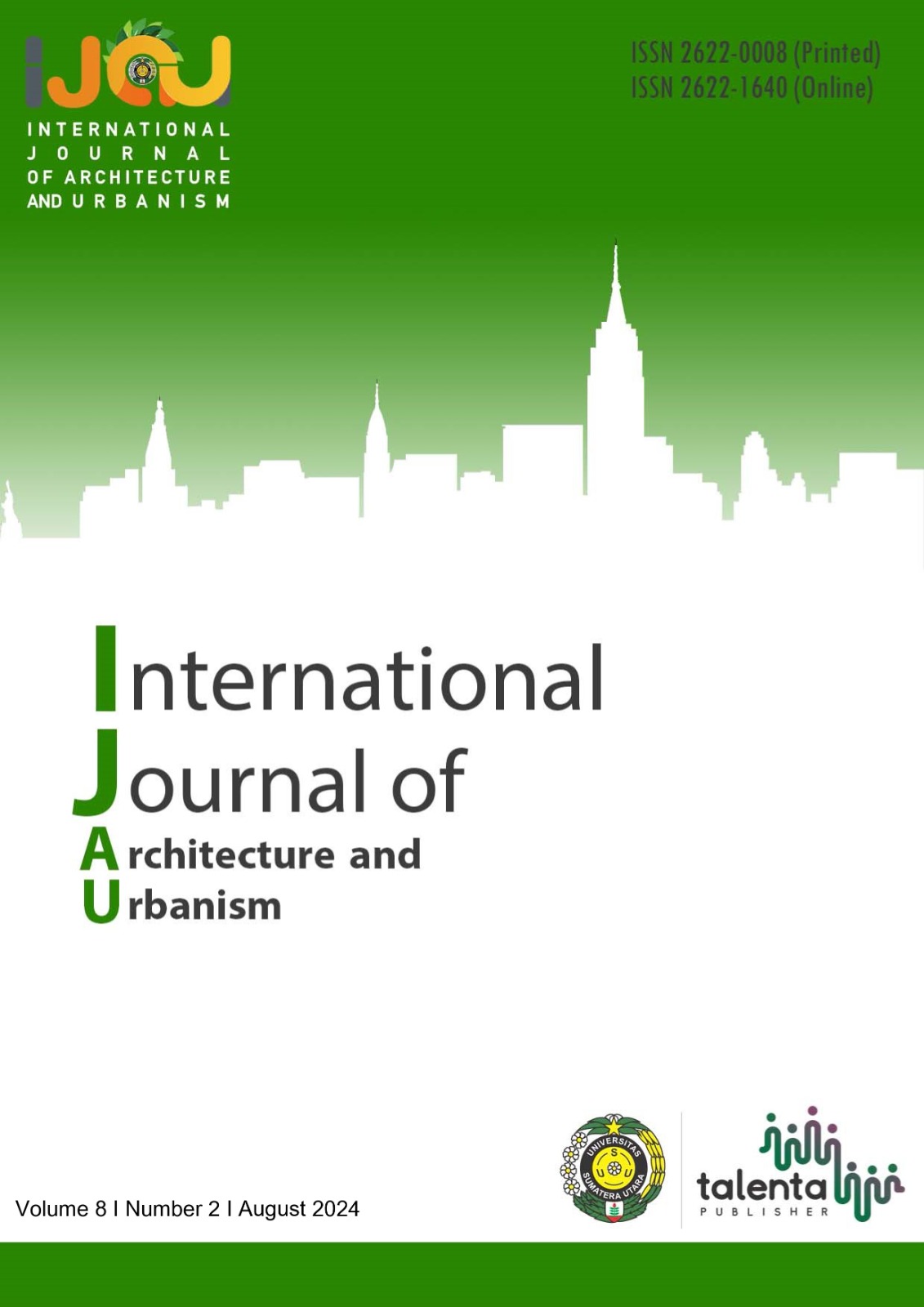The Effect of Urban Farming Module on Urban Heat Island in Yogyakarta
A Case Study of Ngampilan Urban Village
DOI:
https://doi.org/10.32734/ijau.v8i2.16354Keywords:
Urban Heat island, Urban Farming, Mean Radiant TemperatureAbstract
Ngampilan, as the most densely populated sub-district in Yogyakarta City, is characterized by the evident Urban Heat Island phenomenon revealed through land surface temperature mapping. This issue is exacerbated by a high residential density and surface cover dominated by heat-absorbing materials, characterized by low albedo values. A promising solution to mitigate the impact of this phenomenon is the introduction of urban farming modules, particularly tailored to adapt to the morphology of the area falling within the LCZ 3 zone. The 3D model of the urban farming module, reflecting the specific characteristics of the site, was meticulously developed using Sketchup application. Subsequently, the Envi-met software was employed for area analysis, incorporating the urban farming module at predetermined points. The module’s impact is evaluated through mean radiant temperature (MRT) at four distinct stages, corresponding to the proportion of the module area in Ngampilan Urban Village. This analysis spans three location points and four time periods, with outcomes visible through comprehensive mapping, longitudinal-transverse sections, and micro impacts at each module point. The urban farming module demonstrates both macro and micro effects on the surrounding area, contributing to a reduction in MRT temperatures by up to 3.9 degrees Celcius.
Downloads
Downloads
Published
How to Cite
Issue
Section
License
Copyright (c) 2024 International Journal of Architecture and Urbanism

This work is licensed under a Creative Commons Attribution-ShareAlike 4.0 International License.


.png)










